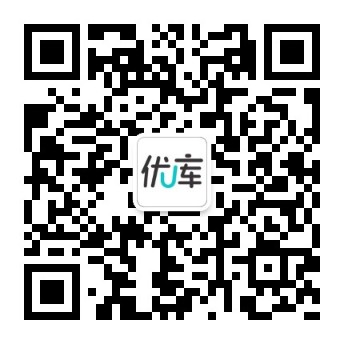- 67.50 KB
- 2022-06-17 15:30:56 发布
- 1、本文档共5页,可阅读全部内容。
- 2、本文档内容版权归属内容提供方,所产生的收益全部归内容提供方所有。如果您对本文有版权争议,可选择认领,认领后既往收益都归您。
- 3、本文档由用户上传,本站不保证质量和数量令人满意,可能有诸多瑕疵,付费之前,请仔细先通过免费阅读内容等途径辨别内容交易风险。如存在严重挂羊头卖狗肉之情形,可联系本站下载客服投诉处理。
- 文档侵权举报电话:19940600175。
句子的种类一、按使用目的可分为陈述句、疑问句、祈使句和感叹句。类别例句用法陈述句肯定Thisisabag.Ilikespring.描述一件事情或者说明说话人的看法陈述句否定Ican’tseeabagoverthere.Idon"tknow.描述一件事情或者说明说话人的看法疑问句一般Areyouastudent?Doesshegetupearly?Doyoulikeswimming?CanyouspeakEnglish?用于提出问题特殊when什么时间;who谁;whose谁的;where在哪里;which哪一个;why为什么;what什么;whattime什么时间;whatcolour什么颜色;whatabout……怎么样;whatday星期几;whatdate什么日期;whatfor为何目的;how怎样;howold多大岁数;howmany数量多少;howmuch多少钱;howabout……怎么样;howfar多远选择Isyourfriendaboyoragirl?反意It’safineday,isn’tit?祁使句肯定Putithere.表示命令、建议或请求否定Don’tlookatthenoticeboard.感叹句Howsmartthescarfis!Whatasmartscarf!Howhardhestudies!表示惊讶、喜悦、赞美、厌恶或愤怒等强烈感情注意:疑问句的回答(1) 一般疑问句用来询问一件事或情况是否属实。用yes或no来回答。(2) 特殊疑问句特殊疑问句由特殊疑问词加一般疑问句构成,不能用yes来no回答。一般用完整的回答或是直接回答疑问词的提问。Whereareyoufrom?IamfromBeijing.或Beijing.(3) 选择疑问句提供两种或两种以上的选项供对方选择,前面的选项之间用逗号分隔开来,后两项之间用or连接,回答时选择一种。Wouldyoulikeapear,anappleorabanana?I’dlikeabanana。(4) 反意疑问句 由陈述句加一个简短问句构成,简短问句对陈述句提出相反的疑问。如果陈述句部分是肯定,后面问句就用否定形式;陈述句部分是否定,简短问句则用肯定形式。Helikesmusic,doesn’the?Yes,hedoes.是的,他喜欢。No,hedoesn’t.不,他不喜欢。Hedoesn’tlikemusic,doeshe?Yes,hedoes.不,他喜欢。No,hedoesn’t.是的,他喜欢。即回答应该按实际情况来回答,实际情况是肯定的,就用yes。否定的就用no.5
小学英语一般疑问句,否定句以及对划线部分提问的解题指导改为一般疑问句:先找am,is,are,was,were或can,would,放在最前面,如没有则判断是否为过去式,是则动词改为原形,句前加Did,其余照抄;不是则判断是否为第三人称单数,是则动词改为原形,句前加Does,其余照抄以上都不是,则句前加Do,其余照抄。改为否定句:方法和上面一样,先找am,is,are,was,were或can,would,再后加not,其余照抄如没有则判断是否为过去式,是则动词改为原形,人后加didn’t,其余照抄;不是则判断是否为第三人称单数,是则动词改为原形,人后加doesn’t,其余照抄以上都不是,则人后加don’t,其余照抄对划线部分提问:① 用适当的疑问词代替划线部分,②将剩余部分改为一般疑问句(注:如划线部分为主语,则用who代替,其余照抄;如划线部分为动词或动词短语,则用do代替,句前加what,再改为一般疑问句)例如:Heisrunningnow.----- Heisn’trunningnow. ---Isherunningnow?---Yes,heis./No,heisn’t.Theyaremakingapuppet.---- Theyaren’tmakingapuppet. ---Aretheymakingapuppet?---Yes,theyare./No,theyaren’t.IoftenwatchTVintheevening.------Idon’toftenwatchTVintheevening.----DoyouoftenwatchTVintheevening?-----Yes,Ido.No,Idon’t.Heplaysfootballafterschool.----Hedoesn’tplayfootballafterschool.Doesheplayfootballafterschool?----Yes,hedoes.No,hedoesn’t.Webeganclassat8o’clockyesterday.------Wedidn’tbeginclassat8o’clockyesterday.Didyoubeginclassat8o’clockyesterday?---Yes,wedo.No,wedon’t.练一练: 1、填入适当的疑问词。1) _____walletisit?It’smine. 2) ____istheChristmasDay?It’sonthe25thofDecember.3)________isthediary?It’sunderthechair. 4) ______istheboyinblue?He’sMike.5)________aretheearphones?Theyare25yuan. 6)________isittoday?It’sSunday. 7)_____isthisredone?It’sbeautiful. 8)___isitfromhere?It’sabout2kilometresaway.9)______isyourcousin?He’s15yearsold. 10)________doyouhavedinner?At6o’clock.11) ___________oneisfatter,theblueoneortheredone?Theblueone.2、对划线部分提问。1)Icanseeeightrubbersinthebox. _________can _____seeinthebox?2)Myfatherisfinetoday. _______yourfathertoday?3)LiuTaoisplayingfootballintheplayground. _______LiuTao_____ intheplayground?4)Mybirthdayisonthe9thofSeptember. _____________yourbirthday?5
5)I’dlikeanicecakeforbreakfast. ______________ likeforbreakfast?6)That’sNancy’sskirt. ___________isthat?3、按要求改写句子。1)It’sabook.(改为一般疑问句) _____________________________________2)Myfatherisintheoffice.(对划线部分提问) ________________________________3)DoyouwatchTVeverySunday?(做肯定回答) ______________4)Thispictureisbeautiful.(改为以what引导的感叹句) What ____________picture!5)Openthedoorforhim.(改为否定句) _____________________________6)Ihaveabigpresent.(对划线部分提问) _______________________________?7)Therearesomeorangetrees.(改为单数句子) __________________________________.8)wearegoingtoseeaBeijingopera.(对划线部分提问) _______________________?9)Hehassomequestions.(改为一般疑问句) ____________________________?10)TheyvisitedtheirrelativesandfriendslastSpringFestival.(改为一般疑问句) _______they ______theirrelativesandfriends lastSpringFestival?二、基本句型:1.主+谓语动词(S+V)如:Iwork.Youstudy.Theyswim.2.主语+系动词+表语(s+linkv+p)Weareintheclassroom.Theylookliketwins.Thefoodtastesdelicious.Leavesturngreen.3.主语+谓动+宾语(S+V+O)ShestudiesEnglish.Theyplayfootball.4.主语+谓动+宾语+补语(S+V+O+C)Weshouldkeepourclassclean.5.主语+谓动+间接宾语(人)+直接宾语(物)(S+V+IO+DO)Mymothermademeanewdress.Theteachergaveussomebooks.三、按结构分为简单句、并列句和复合句。1.简单句:只包括一个主语和谓语的句子。例如:Helikesswimming.Wearestudents.2.并列句:包含两个或两个以上主语和谓语结构的句子,句与句之间用并列连词或分号来连接。如:Thefoodwasgood,buthehadlittleappetite.(youmust)Hurryup,oryouwillbelateforschool.3.复合句:包含一个主句和一个或几个从句的句子,从句有从属连词(when,while,before,after,assoonas,if,because,so,though,etc.)引导.如:ThefilmhadbegunWhenwegottothecinema.Hedidn’tgotoschoolbecausehewasillyesterday.练一练:连词成句 4.is,the,what,weather,today,like ____________________________________________ 5.you,me,please,could,help ____________________________________________ 6.are,what,they,colour ____________________________________________ 7.many,minutes,hour,there,how,are,in,an ____________________________________________ 8.5
him,give,please,water,a,of,bottle ____________________________________________ 9.to,I,put,the,ball,in,the,box,want ____________________________________________there/herebe结构1、therebe结构表示“某时、某地存在着什么事物或人”,包括thereis、thereare、therewastherewere。如:Thereisaschoolnearmyhome.Therearemanybooksinmyschool-bag.Therewasariverhere.herebe结构与它类似,用法也完全相同,只不过是表示“这里存在着什么事物或人”。2、与have、has、had的区别:(1)Therebe句型表示:在某地有某物(或人)Therebe+名词+某地;而have、has、had表示:某人拥有某物某人+have/has/had+某物。Ihavefivebooks.(2)在therebe句型中,主语是单数,be动词用is;主语是复数,be动词用are;如有几件物品,be动词根据最近be动词的那个名词决定——“就近原则”。Thereisadeskandmanychairs.Therearesomechildren,apolicemanandanoldman.(3)therebe句型的否定句在be动词后加not,一般疑问句把be动词调到句首。如:Thereisn’tashopnearmyhome.Aretheresomeflowersinyourbedroom.(4)针对数量提问的特殊疑问句的基本结构是:Howmany+名词复数+arethere+介词短语?Howmuch+不可数名词+isthere+介词短语?(5)针对主语提问的特殊疑问句的基本结构是:What’s+there+介词短语?(6)Therebe结构一般用在句子的开头,而have等词只能用于某一个主语后面。练一练:1、用恰当的be动词填空。1)There fourseasonsinayear. 2)There notanytreestwoyearsago.3)--- thereapostofficenearyourschool?---Yes,there .4)---Howmanystops there?---There onlyone.5)There notanystampsontheenvelope. 6) thereanybirdsinthetree?2、选用“have,has,had,thereis,thereare,therewas,therewere”填空。1)I agoodfatherandagoodmother. 2) atelescopeonthedesk.3)He atape-recorder. 4) abasketballintheplayground.5)They anicegarden. 6)Myfather astory-booklastyear.7) areading-roominthebuilding? 8)WhatdoesMike ?9) anybooksinthebookcase? 10)Howmanystudents intheclassroom?11) astory-bookonthetableamomentago. 12)Whatdoyou ?some,any的用法some用于肯定句;any用于否定句和一般疑问句。请注意看例句后扩号说明的用法。例:Thereissomewaterintheglass.(肯定句) Therearesomeflowersinthegarden.(肯定句)Therearen’tanylampsinthestudy.(否定句)Arethereanymapsonthewall?(一般疑问句)Wouldyoulikesomeorangejuice?(希望得到肯定回答)Doyouwanttotakeanyphotosattheparty?(一般疑问句)练一练:选用some或any填空。1)Thereisn’t milkinthefridge. 2)Icansee cars,butIcan’tsee buses.3)Hehas friendsinEngland. 4)Werethere fruittreesonthefarm?5)---Wouldyoulike cakes?---No,I’dnotlike cakes,butI’dlike coffee.6)DoesTomwanttotake photos? 7)Isthere riceinthekitchen?8)Thereare newbuildingsinourschool. 9)Hereare presentsfor5
you.10)---Arethere picturesonthewall?---No,therearen’t pictures.5






